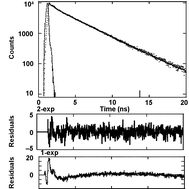Time-resolved total internal reflection fluorescence spectroscopy
Part I. Photophysics of Coumarin 343 at liquid/liquid interface
Abstract
Pico-second time-resolved


 Please wait while we load your content...
Please wait while we load your content...